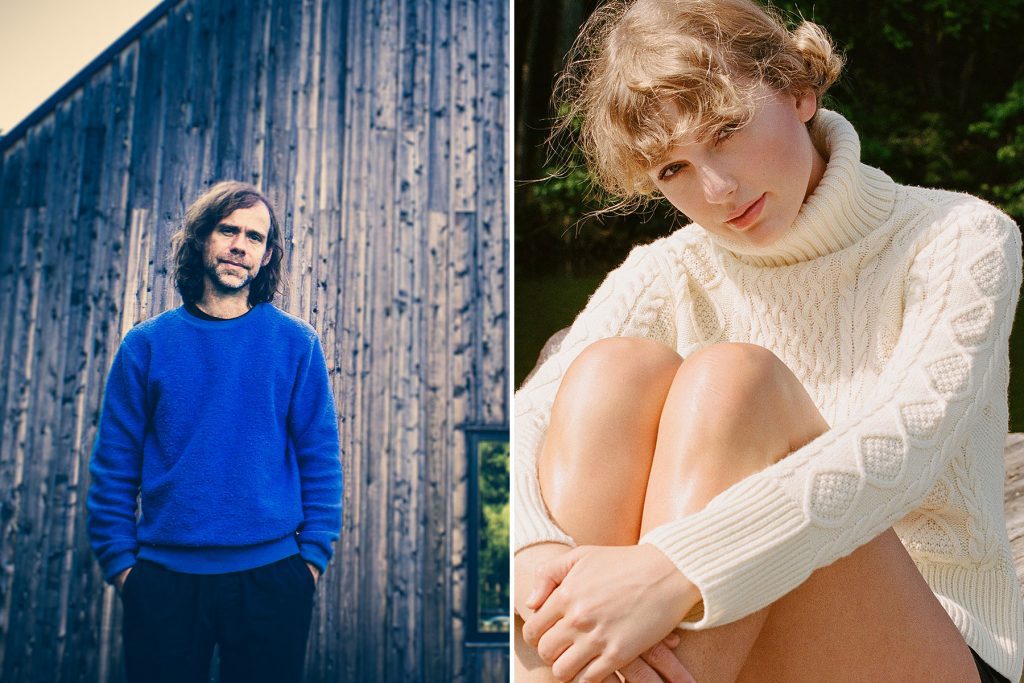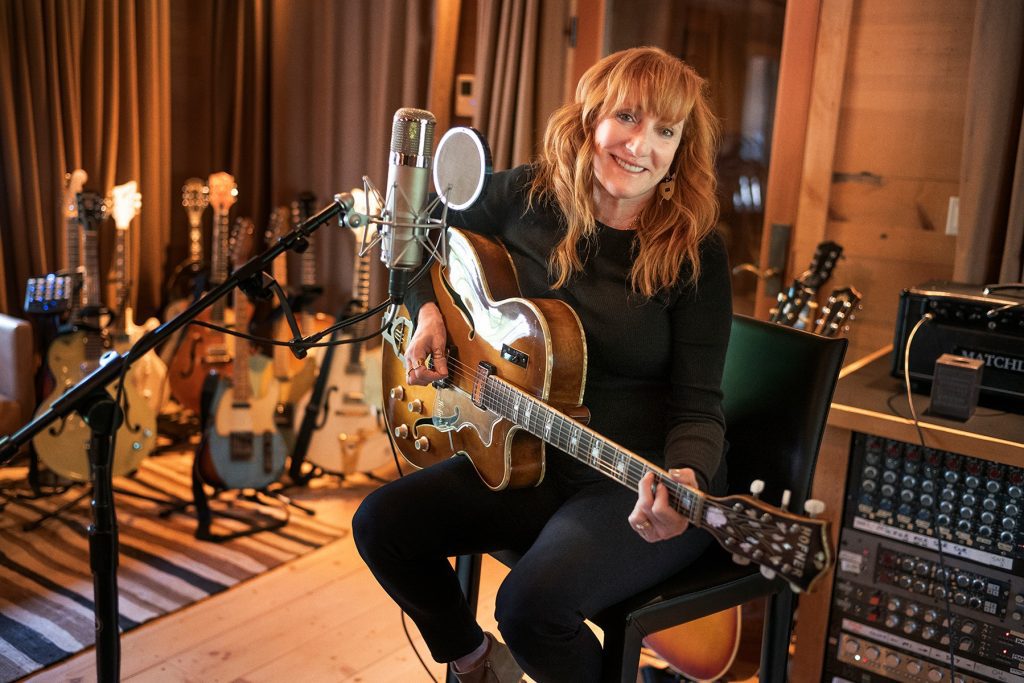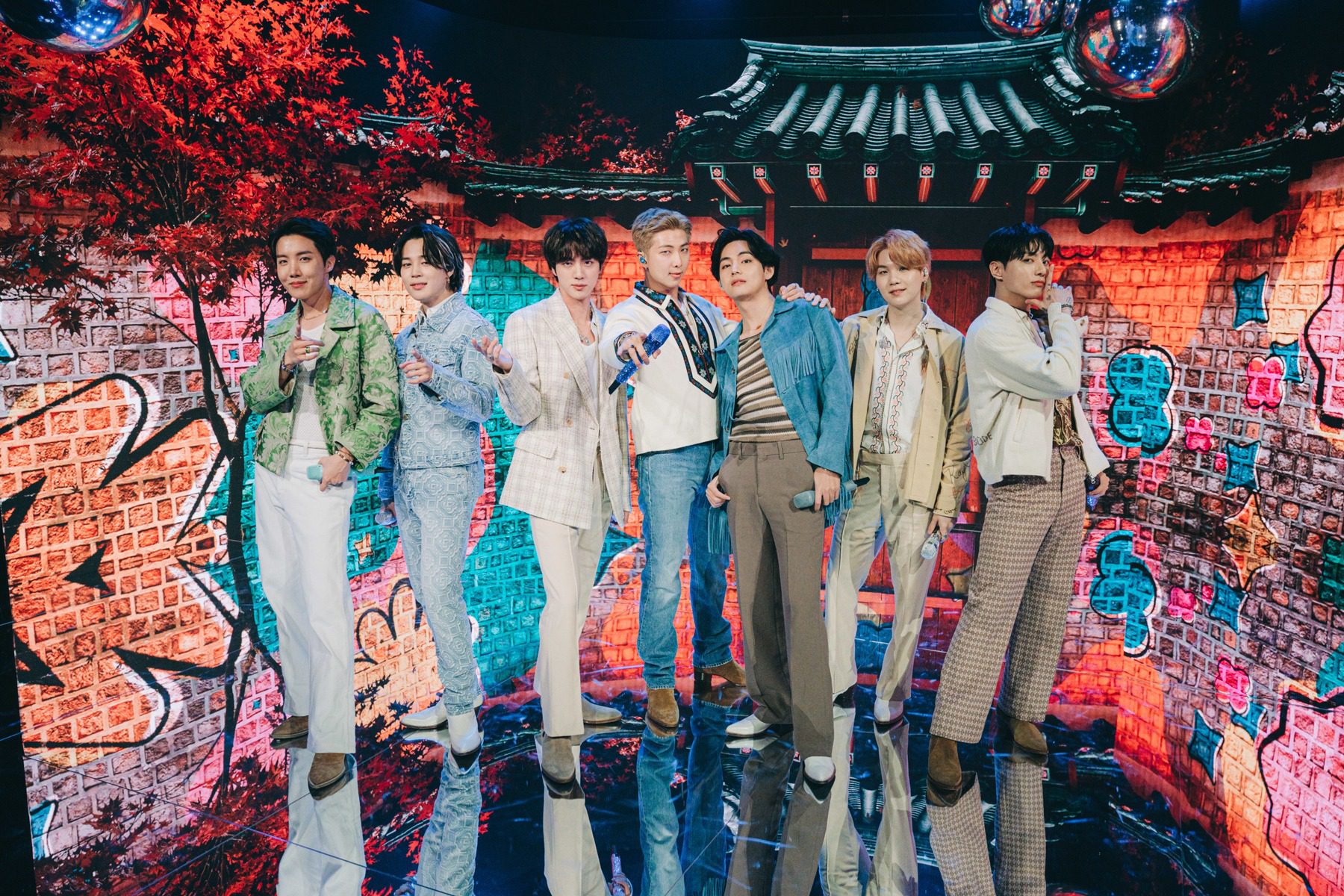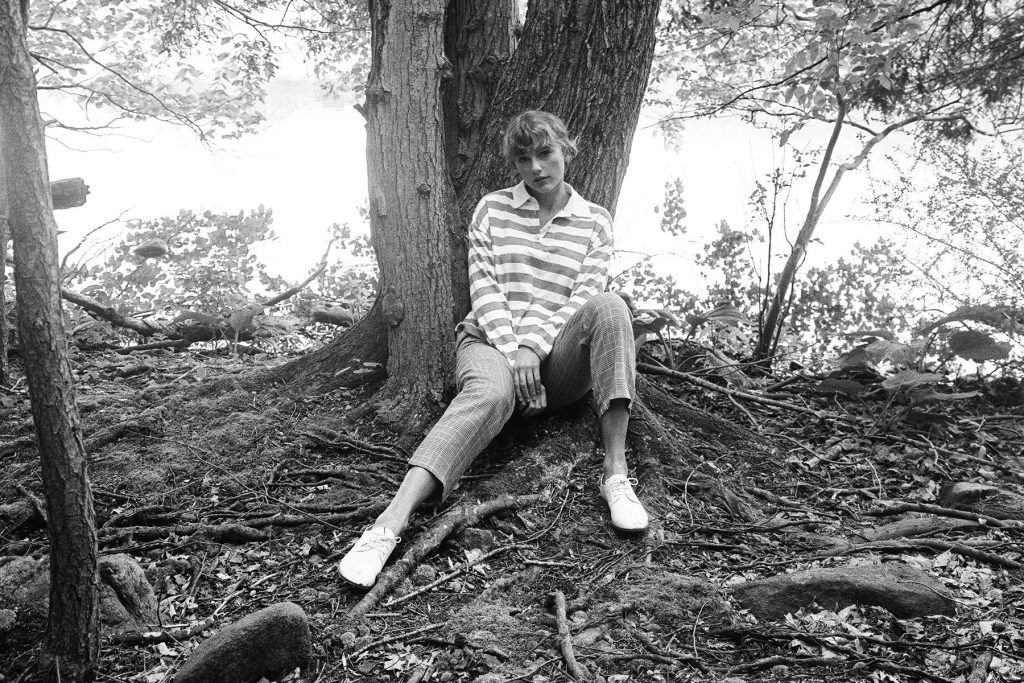
How Aaron Dessner and Taylor Swift Stripped Down Her Sound on ‘Folklore’
At the beginning of March, the National’s Aaron Dessner traveled back to the United States from Paris, where he’d been living with his family, to shack up at Sonic Ranch Studio in Tornillo, Texas to work on the next Big Red Machine album with Bon Iver’s Justin Vernon. Those plans — obviously — soon shifted, as the reality of the COVID-19 pandemic set in. Dessner and his family were able to relocate to their home in upstate New York as lockdown orders went into effect, and the musician soon settled into a groove of homeschooling his kids and focusing fully on music in a way he hadn’t in a while, due to the National’s regularly rigorous touring schedule.
In the middle of what Dessner describes as one of the most productive moments of his career, Taylor Swift called.
A longtime and avowed fan of the National, Swift asked if Dessner wanted to try collaborating on a few songs remotely. He said of course, and asked if she was looking for anything in particular. He noted that he had plenty of material at the ready, but acknowledged he’d been in a more experimental mood, due to the Big Red Machine sessions; not to mention, Dessner added, he’d never really ventured into the pop world Swift has dominated for well over a decade. She told him to send everything he had.
“I think she was interested in the emotions that she feels in some of the music that I’ve made,” Dessner tells IndieLand.” So I just sent her a folder of things I’d done recently and was excited about. Hours after, she sent back a fully written version of ‘Cardigan.’ It was like a lightning bolt struck the house.”
Over the next few months, Dessner and Swift crafted the bulk of Swift’s eighth studio album, Folklore, which was released today, July 24th, after being announced the day before. Folklore is yet another mesmerizing musical move from Swift — a shift towards a broad indie-folk sound (à la, of course, the National) that still feels distinctly Swift-ian, as if she’s been making music like this her whole career. Lyrically, too, the record finds Swift playing with character and myth in new ways that — befitting the album’s title — recall the great American folk tradition.
Dessner wasn’t the album’s only collaborator; Swift wrote several songs with regular producer Jack Antonoff, as well as songwriter named William Bowery, who doesn’t seem to have much of an internet footprint. Vernon also contributed to two songs, singing on one of the album’s many stunners, “Exile,” while Dessner’s brother and National bandmate, Bryce Dessner, helped orchestrate it with a mix of musicians scattered around the globe (none of whom even knew what they were playing on when they recorded their parts).
Dessner spoke with IndieLand about working with Swift, their instant chemistry, how the album developed under a thick cloud of secrecy and more.
When Taylor first reached out, did she have a specific vision in mind for the album?
She was a bit cryptic. I didn’t know that we were actually working on a record for quite a while. It just seemed that she was seeking me out to collaborate. And then we were both feeling very inspired by it. Once there were six or seven songs that we had written over a couple of weeks, she said, “Hey can we talk?” Then she said, ‘This is what I’m imagining,’ and started to tell me about the concept of Folklore. Then she mentioned that she’d written some songs at an earlier stage with Jack [Antonoff], and they felt like they really fit together with what we were doing. It was a very inspiring, exhilarating collaborative process that was almost entirely remote. Very sort of warp speed, but also something about it felt like we were going toe-to-toe and in a good pocket.
After “Cardigan,” how did these songs develop and do you think she pushed you in any new directions as a songwriter?
When you’re working with someone new, it takes a second to understand their instincts and range. It’s not really conscious. She wrote “Cardigan,” and then “Seven,” then “Peace.” They kind of set a road map, because “Cardigan” was this kind of experimental ballad, the closest thing to a pop song on the record, but it’s not really. It’s this emotional thing, but it has some strange sounds in it. “Seven” is this kind of nostalgic, emotional folk song. Even before she sang to it, I felt this nostalgia, wistful feeling in it, and I think that’s what she gravitated towards. And “Peace,” that just showed me the incredible versatility that she had. That song is just three harmonized bass lines and a pulse. I love to play bass like that — play one line then harmonize another, and another, which is a behavior I stole from Justin Vernon, because he’s done that on other things we’ve done together. And actually, that’s his pulse, he sent me that pulse and said, “Do something with this.” But when she wrote that song, which kind of reminds me of a Joni Mitchell song over a harmonized bassline and a pulse, that was kind of like, “Woah, anything can happen here.” That’s not easy to do.
So, in the morning I would wake up and try to be productive. “Mad Woman” is one I wrote shortly after that, in terms of sound world, felt very related to “Cardigan” and “Seven.” I do have a way of playing piano where it’s very melodic and emotional, but then often it’s great if whoever’s singing doesn’t sing exactly what’s in the piano melody, but maybe it’s connected in some way. There was just some chemistry happening with her and how she was relating to those ideas.
“Epiphany” was something she had an idea for, and then I imagined these glacial, Icelandic sounds with distended chords and this almost classical feeling. That was another one where we wrote it and conceived it together. She just has a very instinctive and sharp musical mind, and she was able to compose so closely to what I was presenting. What I was doing was clicking for her. It was exhilarating for us, and it was surreal — we were shocked by it, to be honest [Laughs]. I think the warmth, humanity and raw energy of her vocals, and her writing on this record, from the very first voice memos — it was all there.
Do you think that chemistry might’ve had something to do with her being a National fan, and you being a fan of her music?
We met Taylor at Saturday Night Live in 2014, or whenever that was that we played and Lena Dunham was hosting. We got to meet her, and that was our first brush with a bona fide pop star. But then she came to see us play in Brooklyn last summer and was there in a crazy rainstorm, like torrential downpour, and watched the whole show and stayed for a long time afterwards, talking to me and my brother. She was incredibly charming and humble. That’s the nice thing about her, and a lot of people I’ve met that have that kind of celebrity. It’s great when you can just tune it out and be normal people and chat, and that’s how that felt. So, we knew that she was a big fan, and we really got into the 1989 album. Our Icelandic collaborator, Ragnar Kjartansson, is a crazy Swiftie. So we’ve kind of lived vicariously through him. I’ve always been astonished by how masterful she is in her craft. I’ve always listened to her albums and put them in this rarefied category, like, “How did she do that? How does anybody do that? How do you make ‘Blank Space?’” There was an element that was intimidating at first, where it just took me a second to be like… Not because I think her music is better than what we’ve done, but it’s just a different world.
Were there particular songs, albums or artists the two of you discussed as reference points for this album?
“Betty,” which is a song she wrote with William Bowery, she was interested in sort of early Bob Dylan, like Freewheelin’ Bob Dylan, I think. “Epiphany,” early on, felt like some weird Kate Bush-meets-Peter Gabriel thing. I think we talked a little about those things, but not a lot. Actually, I think she really trusted me as far as my instincts to where the music would ultimately go, and also the mixing process. We really wanted to keep her voice as human, and kind of the opposite of plastic, as possible. That was a bit of a battle. Because everything in pop music tends to be very carved out, a smiley face, and as pushed as possible so that it translates to the radio or wherever you hear it. That can also happen with a National song — like if you changed how these things are mixed, they wouldn’t feel like the same song. And she was really trusting and heard it herself. She would make those calls herself, also.
You mentioned William Bowery — who is he?
He’s a songwriter, and actually because of social distancing, I’ve never met him. He actually wrote the original idea for “Exile,” and then Taylor took it and ran with it. I don’t actually know to be totally honest.
We’ve been trying to track him down, he doesn’t have much of an internet presence.
Yeah, I don’t fully know him, other than he wrote “Betty” and “Exile” with her. But you know she’s a very collaborative person, so it was probably some songwriter.
So it’s not an alias for anyone?
No, no, no. I mean, I don’t know — she didn’t tell me there was a “Cardigan” video until literally it came out, and I wrote the song with her [laughs]. So I don’t know. But I’m pretty sure he’s an actual songwriter. She enjoys little mysteries.
“These are kind of these folkloric, almost mythical tales that are woven in of childhood, lost love, and different sentiments across the record.”
With the National, you and your brother write the music, Matt Berninger adds the lyrics, and then you fuse it — was it a similar process on Folklore?
Taylor is very collaborative in that sense that, whenever she sent a voice memo, she would send all the lyrics and then ask me what I thought. And sometimes we would debate certain lines, although generally she’s obviously a strong writer. So she would ask me if I liked one line, and she would give me alternate lines and I would give her my opinion. And then when she was actually tracking vocals, I would sometimes suggest things or miss things, but she definitely has a lot of respect for the collaborative process and wants whoever she’s writing with to feel deeply included in that process. It was nice, and was a back and forth, for sure. And she would sometimes have ideas about the production if she didn’t like something, especially. She would, in a tactful way, bring that up. I appreciated that, too, since I wanted to try to turn over every leaf, take risks and sometimes get it wrong. That always takes a second, to get over and then you start again.
You mentioned earlier that once you had six, seven songs, she was able to describe a concept behind the album. I’m curious what that conversation was like.
She would always explain what each song was about to me, even before she articulated the Folklore concept. And I could tell early on that they were these narrative songs, often told from a different… not in the first person. So there are different characters in the songs that appear in others. You may have a character in “Betty” that’s also related to one in “Cardigan,” for example. And I think that was, in her mind, very, very important. It doesn’t seem like, for this record at least, that she was inspired to write something until she really knew what it was about. And I think I’m used to a more — at least lately — impressionistic and experimental world of making stuff without really knowing what it is. But this was more direct, in that sense. That was really helpful, to know what it was about and it would guide some of the choices we were making.
Every time she would send something, she would narrate a little bit, like how it fit, or what it was about. And then when she told me about Folklore as a concept, it made so much sense. Like “The Last Great American Dynasty,” for example, this kind of narrative song that then becomes personal at the end — it flips and she enters the song. These are kind of these folkloric, almost mythical tales that are woven in of childhood, lost love, and different sentiments across the record. It was binding it all together and I think it’s personal, but also through the guise of other people, friends and loved ones.
You were working in secret — how did that affect the process? Was that a difficult burden?
It was. I was humbled and honored and grateful for the opportunity and for the crazy sort of alchemy we were having. But it was hard not to be able to talk openly with my usual collaborators, even my brother at first. I didn’t know if I could really tell him, because we normally… Ultimately, he helped me quite a bit, he orchestrated songs. But we always help each other. But eventually, we figured out how to do it. Towards the end of the process, I said to Taylor, ‘I really feel that I need to try a few experiment and try to elevate a few moments on the record because we have time, and we’ve really done a ton of work here, and it all sounds great, but I think we can go even further.’ And then she said, ‘Well what does that mean?’ And I explained how that would work, and the way that we work. Our process is very community-oriented, and we have long-time collaborators that we have a good understanding with. So I was able to say, to my friends, ‘This is a song I’m working on, I can’t send it to you with the vocals, and I can’t tell you what it is, but I can explain what I’m imagining.’ And the same with my brother, he knows my music so well that that was very easy for him to just take things that we were working on, add to that, and do his kind of work. So it was all remote and everyone was in their corner and we were shipping things around. It was incredibly fast because of that, because you didn’t have eight people needing to come to the studio. You had eight people working simultaneously — one in France and one in L.A. and one in Brooklyn. This is how it went, and it was fun. We got there.
When were you able to tell everyone who contributed that this was the Taylor Swift record, what was their reaction?
You can imagine. I think they realized it was something big because [of] the confidentiality, and they were like, ‘It could only be a few things.’ I couldn’t tell them until, basically, when she announced it. Just in the moments after she announced it, I basically told everyone. I was like, ‘By the way…’ And they were thrilled. Everyone’s thrilled. Nobody seemed mad, everyone was thrilled and honored. Even Justin Vernon had not heard anything else except “Exile,” even though the pulse of that song “Peace,” he gave that song to me. It was important to have it be a surprise, and you know how it can be with someone in her position, with all the speculation, and she’s always under a lot of pressure like that. So it was really important to the creative freedom she was feeling that this remained a secret, so she could just do what we were doing.
Being such longtime friends and collaborators with Justin, what was it like hearing “Exile” for the first time? His voice and Taylor’s together?
He’s so versatile and has such a crazy range, and puts so much emotion… Every time he sings when I’m in his presence, my head just kind of hits the back of the wall. That’s the same on this song. William Bowery and Taylor wrote that song together, got it to a certain point, then I sort of interpreted it and developed a recording of it, and then Taylor tracked both the male and female parts. And then we sent it to Justin and he re-did obviously the male parts and changed a few things and also added his own: He wrote the “step right out” part of the bridge, and Taylor re-sang to that. You feel like, in a weird way, you’re watching two of the greatest songwriters and vocalists of our generation collaborating. I was facilitating it and making it happen, and playing all the music. But it was definitely a “Wow.” I was just a fan at that point, seeing it happen.
Are there any moments that really stick out to you as particularly pivotal in shaping the sound of this record?
The initial response. When we first connected, and I sent a folder of music and Taylor wrote “Cardigan,” and she said, “This is abnormal. Why do you have all these songs that are so emotional and so moving to me? This feels fated.” And then she just dove into it and embraced this emotional current. And I hope that’s what people take out of it: The humanity in her writing and melodies. It’s a different side to her. She could have been every bit as successful just making these kinds of songs, but it’s so great that she’s also made everything that she’s ever made, and this is a really interesting shift, and an emotional one. It also opens other doors, because now it’s kind of like she can go wherever she wants, creatively. The pressure to make a certain kind of… bop — or whatever you want to call it — is not there really anymore. And I think that’s really liberating, and I hope her fans and the world are excited by that because I am. It’s really special.




